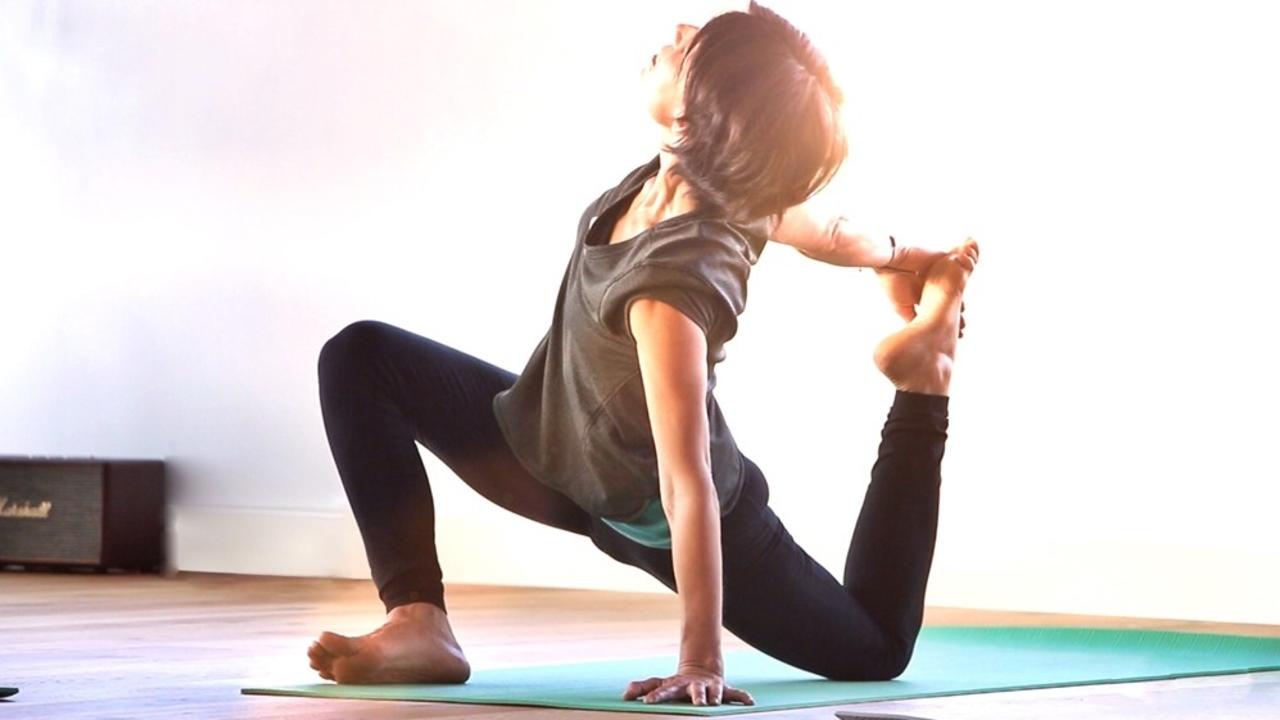What’s the difference between yoga and pilates?

Your housemate goes to yoga every morning; your mum and her friends swear by pilates. But you wouldn’t know the difference between the two if someone slapped you in the face with a very expensive set of activewear.
Don’t worry, you don’t have to risk your mum whipping out her moves in the living room to demonstrate the difference – we’ll lay it out for you right here. Both yoga and pilates are great forms of exercise, and there’s a reason each of them attract such a large global following of enthusiastic participants.
What are yoga and pilates?
Origins
Yoga is an ancient practice that originated thousands of years ago in India. It’s since been transported all over the world, and with over 2 million people who swear by it, it’s currently the most popular cardio, strength and flexibility exercise in Australia, according to Roy Morgan market research.
Pilates is a more recently developed practice that was created by Joseph Pilates in the 1920s. It’s a fusion of other forms of exercise including ballet, calisthenics, and yoga as well. Roy Morgan found this form of exercise is practised by 1.2 million Australians. It focuses on strengthening the body and overall fitness, particularly the core, through precise, repetitive movements.
Key components
Yoga is a practice that focuses on the mind-body connection. Breathing is an inherent part of the art, along with postures and dynamic sequences that serve to stimulate relaxation, enhance flexibility and create greater awareness and self-reflection. Yoga is not a strenuous form of exercise – it’s more about slowing things down and focusing on holding positions correctly, connecting with your inner self and letting your breath guide you through the longer poses.
Pilates is also a slower form of exercise that focuses more on precision and correct technique than physical exertion. It’s more dynamic than yoga in its poses, as yoga often concentrates on static stretches. However, similar to yoga, breathing is a key part of pilates classes.
Both yoga and pilates are practised on mats, and while they don’t require props, many instructors use blocks and belts to help with positioning and balance, and enhance particular postures or sequences.
What are the main differences between pilates and yoga?
Aside from being unique practices with different origins, there are several key distinctions between pilates and yoga that can help you decide which one you’d prefer.
Position
Pilates exercises tend to be performed while your body is lying, sitting or kneeling on the ground. Yoga also involves movements that require you to stand, and therefore encompasses a little more variety in its movements.
Goals
Pilates and yoga serve different purposes. Pilates aims to strengthen and tone your core muscle groups, while the purpose of yoga is more to centre your awareness and bring you in touch with yourself. It’s less about increasing physical fitness and more about the mental and spiritual rewards.
Variety
Yoga offers a little more variety than pilates in the sense that there are several variations of the practice. Some forms of yoga are slow and require holding postures for several minutes so your body can reap the full benefit of the positions. Other forms are more dynamic in their movements. Essentially, this means that you can tailor your yoga practice to suit the kind of workout you’re after.
The health benefits of yoga and pilates
Practising both yoga and pilates brings significant health and wellness benefits.
1. Assisting muscle pain
Pilates’ focus on core strength and aligning the spine is particularly beneficial if you’re suffering from pain in your joints, neck or back. The way yoga stretches out your muscles and increases flexibility is also of great benefit to pain and muscle tightness or stiffness.
2. Posture, balance and coordination
Both pilates and yoga will benefit your posture and help you to stand taller, more confidently, and move with greater balance and coordination.
3. Treatment of health conditions and injury prevention
The impact of regular yoga practice on many health conditions has been documented in research studies. These conditions include cardiovascular diseases, IBS, heart conditions and even cancer. Yoga isn’t necessarily a cure for these diseases, but rather a way of alleviating suffering and reducing the signs of fatigue and tiredness.
The emphasis on deep breathing in pilates can also help promote relaxation and help alleviate symptoms of stress. However, as a low impact form of exercise, its primary benefit lies in increasing stabilisation and therefore reducing the risk of musculoskeletal injuries. It’s a great form of exercise if you’re undergoing rehabilitation for chronic back pain, neck pain, foot and ankle injuries or spinal injuries.
4. Mental health benefits
Perhaps the biggest difference between the two forms of exercise is the impact that yoga has on your mind. Practise yoga even just once a week and you’ll notice a difference in your concentration, mood and ability to respond well to everyday stress. Research has shown that yoga helps with mental health disorders including depression and anxiety.
The verdict: Should you do yoga or pilates?
Both pilates and yoga are great forms of exercise, and we’d suggest giving both a try! However, the one you start with really depends on what you want to get from the workout. We’d recommend beginning with pilates if the goal is to strengthen your body, and with yoga if you’re feeling stressed and would like to feel calmer and more in tune with yourself.
If you’re keen to try out a yoga class and see if it’s for you, take a look at our beginner studio classes, suitable for people of all ages and backgrounds.

